How far is it possible to make a coat lining with shreds, off-cuts and otherwise wasted pieces of fur?
When I made a lining for my M65 field jacket two years ago, the thing that attracted me most was the idea of re-using fur that would otherwise go to waste.
Since then, the maker Yves Salomon has gone further in that direction. Last year they issued what they called the Resource Pact, which promised to drastically reduce the use of new fur, focusing instead on re-using existing furs, recycling or up-cycling old pieces.
It’s quite a change for a fashion company mostly producing new fur up to that point. To support and help publicise it, I thought it would be interesting to test the limits of the process by making a lining for my Coherence raincoat out of off-cuts.
(Fur is of course a controversial subject, but also far from a simple one. We had a really good discussion about this two years ago in this post. Rather than repeating all the same points, I would ask that anyone interesting in talking about it add their contribution there. Posts never die on PS - they only mature.)
The lining for my field jacket (above) was also not made with new fur - it was re-used from another, old coat. But this is relatively straightforward as the skins all match already, making a uniform pattern and colour.
Other Yves customers do this kind of thing all the time, for example bringing in their grandmother’s fur coat and making the body into a gilet, one sleeve into a muff, the other into gloves.
Rather harder is using off-cuts from production, because there is rarely enough to make one uniform coat or other piece of clothing.
But, I think this can look fine in a lining. After all, it’s more hidden away, and a little variation in the colours can even add extra interest.
It's like patchwork tweed, or the way Japanese boro cloth re-uses old cotton panels and stitches over them to create something new - and beautiful in a different way to something clean and new.
I decided to make a lining for a raincoat this time, because my previous liner had the small disadvantage that it could only be used in one coat.
A liner for a field jacket can’t really be re-used in anything else. It’s too short for an overcoat, too long for a bomber.
Of course, it can be altered, re-used and re-worked in the future - just like those old grandmothers’ coats - and I’m sure I will do if I ever stop wearing it in the field jacket. The whole point of this, after all, is that fur is precious and shouldn't be wasted.
But for the moment, the rabbit lining was limited. One that was made for a raincoat, on the other hand, could also be used in any other raincoat (if buttons were attached in the same places) and even a roomy overcoat.
The Yves Salomon team showed me a big selection of all the off-cuts they had. (Nothing is ever wasted in a fur atelier - even the tiniest scraps are kept and reworked into a complex patchwork (see image at bottom). Who does this with wool, even the finest worsted or cashmere?)
From this selection, I picked out groups of dark and mid-brown mink. I was interested in mink because it is considered the warmest and most luxurious, but also because it is not as thick as rabbit and the browns would be a nice, subtle lining for this or any other coat.
We already had a pattern for the liner, because I had the original one from Coherence. So we laid that out and started fitting the different colours of mink into sections (below).
It's a lot easier to make a liner when you have the original pattern like this, and buttons set in the right places. A lot of time is saved in pattern making. I know a reader did this with the PS Trench Coat recently, in the same way.
There were a couple of other unusual things we did to make the maximum use of the fur.
One was to use the full width of the skin, which isn't common with coats because the colour varies from the centre to the edge (see central section below). Most people want a uniform colour, and so skins are normally trimmed, and more used.
The other was to use scraps at the edges and joins in the lining, to help avoid trimming or the use of extra pieces. Given the overall aim of making the most of what we had, both seemed fitting.
The end result (below) was a section of very dark, almost black mink across the top of the shoulders; then a mid-brown area across the middle of the back; and finally darker brown skins on the lower part of the back and the two halves of the front.
It’s not a combination a furrier would ever use on the exterior of a coat. But on the inside I think it's nice, and certainly unique. It has a story and a purpose.
Covid delayed the result by several months. To the point now where I’m receiving it just as the weather is warming up.
But many of the workers at Yves Salomon are elderly - often with decades of experience in fine furs - and management were taking no risks at any stage of lockdown.
Still, it was worth the wait and I’m excited about wearing it this Winter. Fur is wonderfully warm, almost like a radiator under a coat. And it’s nice to feel that this material would have gone to waste otherwise.
I’ve since learned that the darkest section across the shoulders was the remainder from a customer’s great-grandmother’s coat, and almost 100 years old. Yet it’s still in perfect condition, and now has a new lease of life.
I’ll post pictures at a later stage of the lining in the coat - perhaps when it’s being worn, in Winter.
This lining cost £2200 - expensive for a lining, but cheap for mink, as it used up-cycled, mixed female mink. If a customer brings their own fur pieces to be made bespoke into a gilet then the manufacturing price would be around £1,000, depending on the style. A rabbit-fur gilet would cost in the region off £1,250.
Photography: Alex Natt, James Holborow and Jamie Ferguson


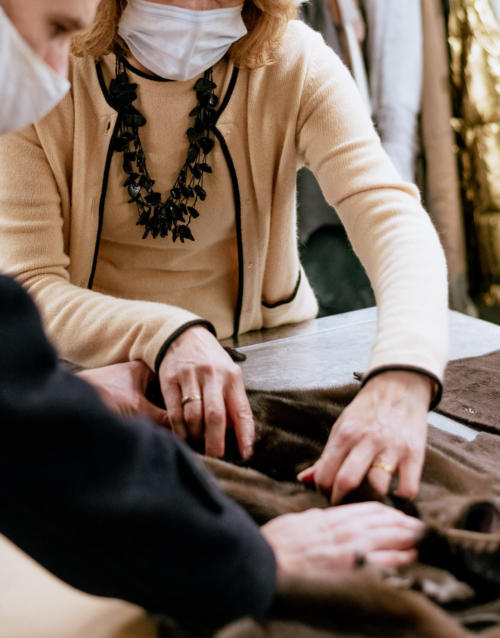
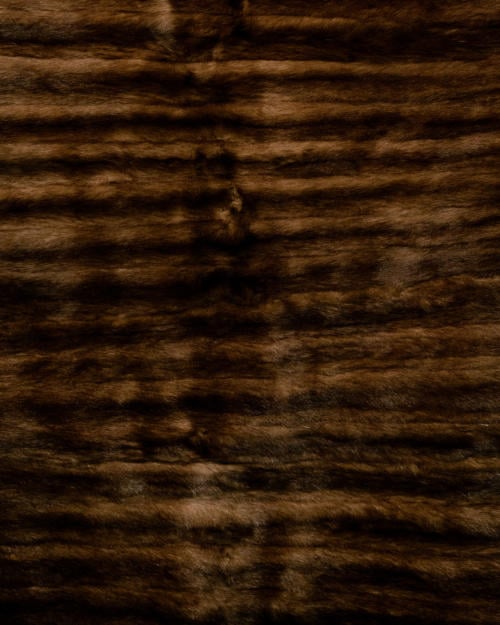
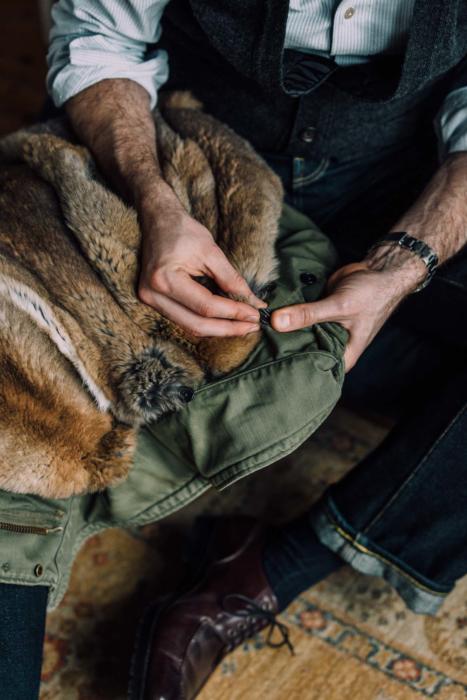
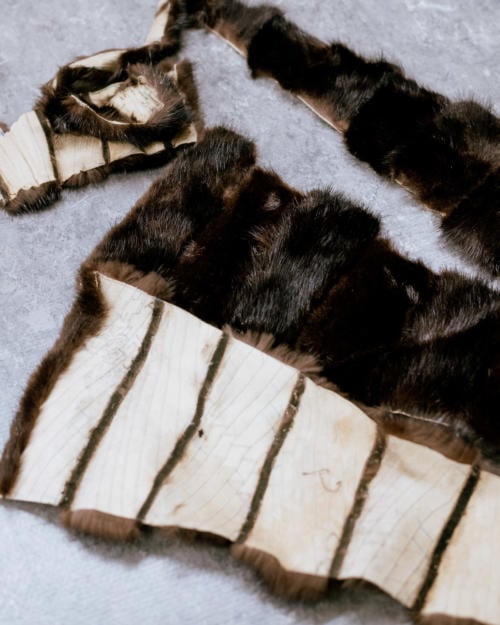
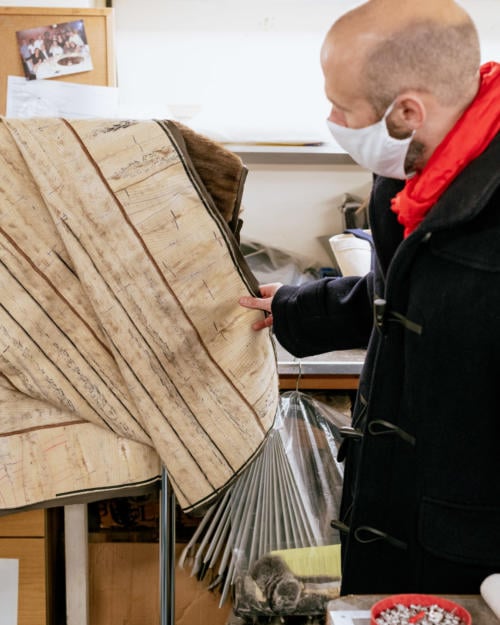
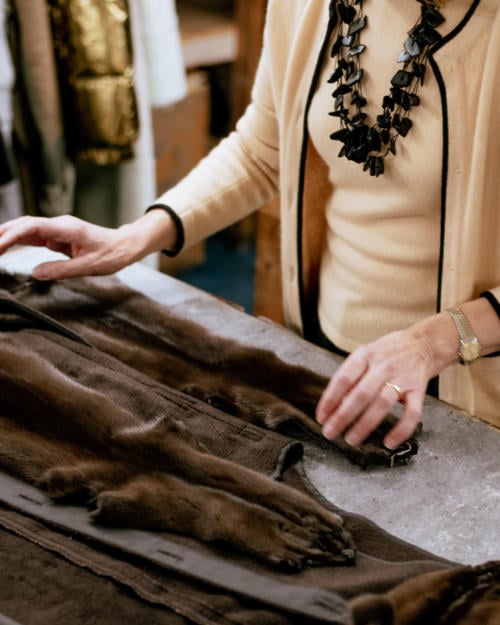
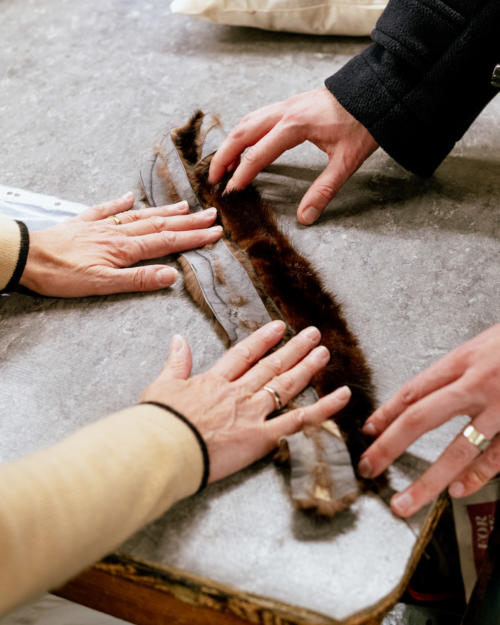
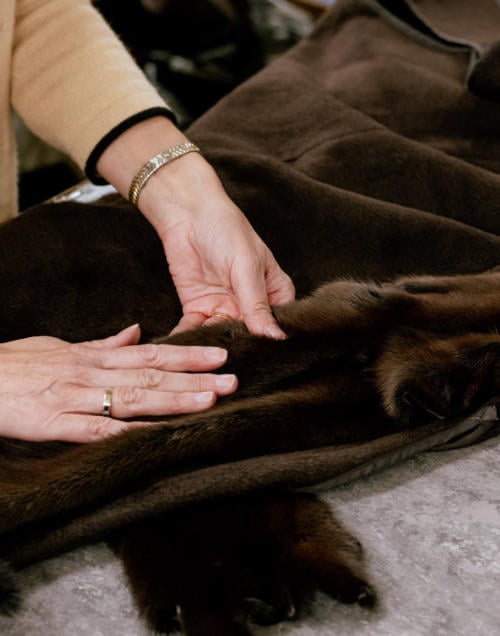
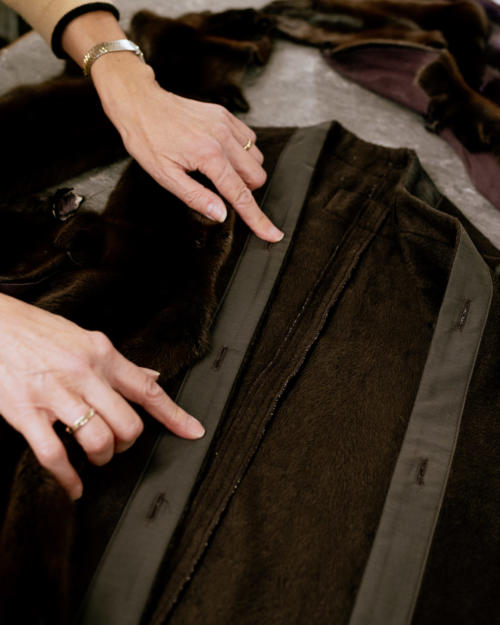
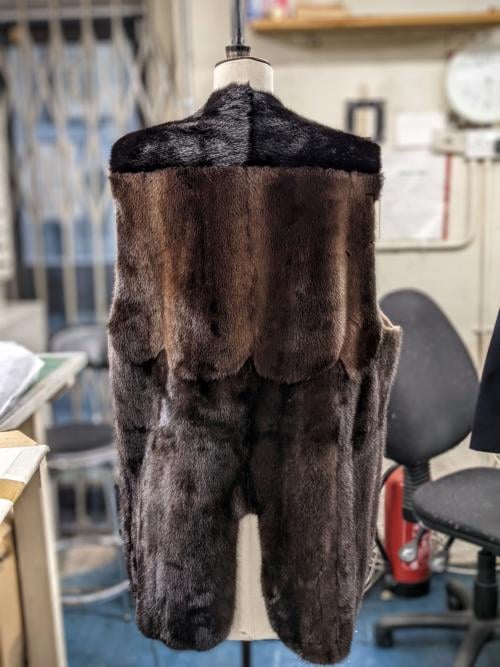
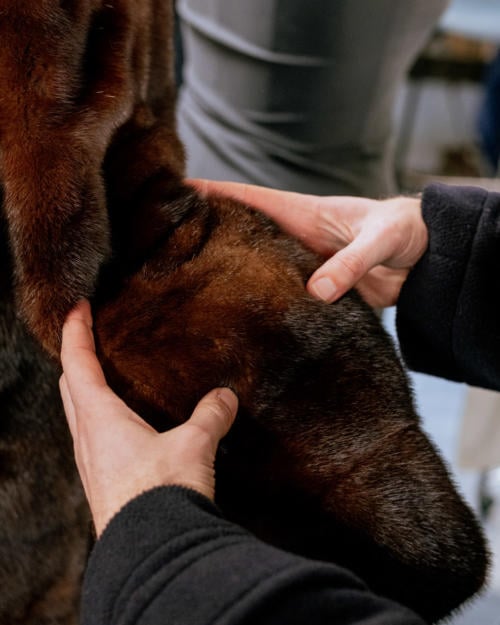
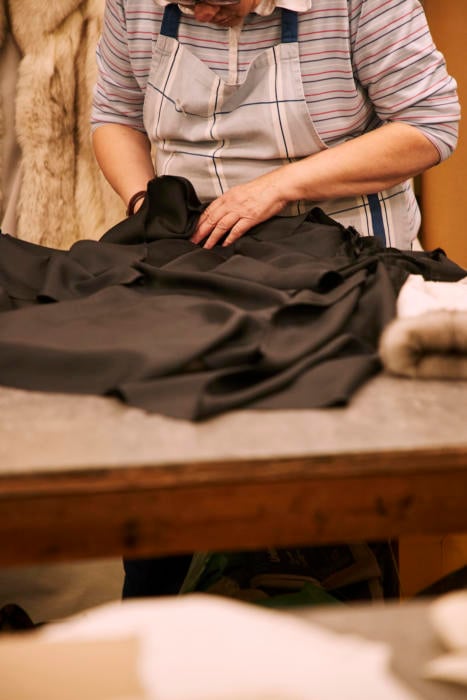
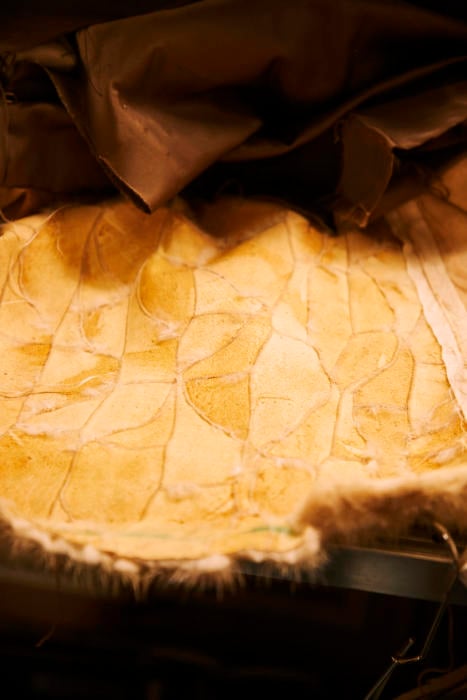
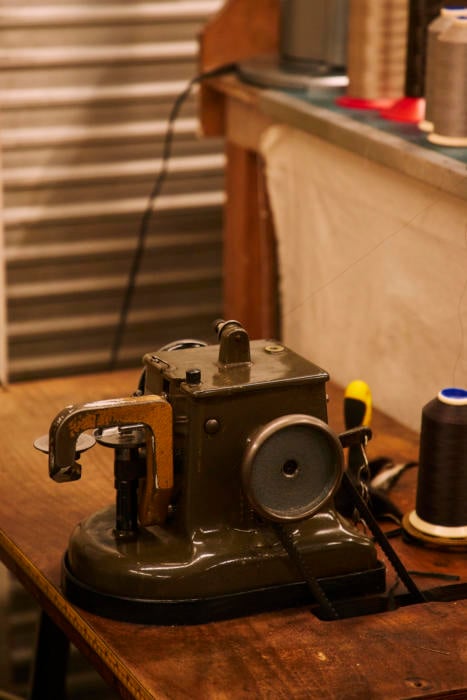


























Really looks nice Simon. A very sustainable way of using fur. I’d love to use mink some day in a project, it always reminds me of the 1960’s Robert Asher movie ‘Make Mine Mink’.
Having trouble picturing the end result, is the fur faced against the fabric or against the wearer (and the image of the mannequin showing the liner “inside-out”? I really like the concept of this series, and I hope that in the future more respect will be shown against fur garments. By that I mean both with people who buy fur as well as opponents to the fur “industry”. There has to be a middle-ground, and this series has made me hopeful.
Cheers Simon, keep up the good work!
Oh good John. Anything that helps that discussion be more open is a good thing.
Sorry it’s hard to envision. It’s on the mannequin inside out. The fur faces the wearer, so you can feel it more.
I’ll do some better photos at another time
Hi Simon – this article has got me thinking about making a lining (well, getting one made) in a wool flannel to go into some of my coats that don’t have linings. Probably not fur, though, because Australia is never really cold enough.
How did you allow for access to the internal chest pockets of the coat?
I didn’t Tony, as it doesn’t have internal chest pockets, only hip ones. And for those we left slits in the lining.
Raincoats often don’t have chest pockets, as you can’t access them when it’s raining. That’s why they sometimes have two internal hip pockets – one for your ones, and one you can reach through a separate slit to hold belongings.
Thank you – did you need to do any finishing on the slits to stop them wearing or tearing or fraying?
Yes, but only the same as you’d do around the other edges anyway
Hi Simon, did you ever get to take some further pictures of what it looks like on the outside, i.e. Towards the jacket?
That would be great. Thank you
No, sorry Carl
I think as resources become limited, this is how we will be using materials in future. Velvet, immediately, springs to mind, but I can see it happening with other natural fabrics. As an aside, I have a moleskin jacket lined in recovered silk .
I wonder if scraps of fur can be recycled/upcycled into hats, the kind of Russian fur hats, often with ear flaps, that keep the head warm in very cold weather.
Another use of scraps of fur might be in art work — collages made with other types of cloth. Perhaps this has already been done.
Good idea. I plan to use an old womens furcoat as a liner for a swedish m59. Do you recommend it as a gilet or as a full liner with sleeves?
Gilet really. You don’t need it in the sleeves and it can make the sleeve too tight
would have been good seeing it fitted to the garment and then being worn.
Thank you for this thought provoking post.
Regarding fur lined military jackets, these are seen frequently on IG and images from Pitti. I can think of two tailor houses which have made these part of their signature offerings. I don’t think I have seen these in the states. Simon can you give me a little background on this trend? Did these tailor shops inspire you to get your M65 jacket lined or vice versa ?
I don’t know if I influenced anyone else, but no that wasn’t why I had mine done. It was because I loved the field jacket but it can be very cold – the cotton really has little warmth.
Does doing this cost significantly less than using a whole piece?
Yes, good point. I’ll double check the price difference
Spot on delving further into this topic, very much hitting the Zeitgeist so thanks for that Simon!
Do you happen to have addresses of artisans who can do this work reliably? Maybe soemone in Milan?
Hi Carl,
Nice to hear.
The only ones I know are Yves in London and in Paris.
I can recommend a furrier in Milan who often remodels my girlfriend’s coats. I’m certain he could make a lining:
SIMER FURSTYLE SRL2, Via Rasori Giovanni
20145 Milano (MI)
Tel: 02 4814639
Great, thank you Stephen
Hi Simon – I’m just wondering what upside is to having a liner made in this way, rather than something like a gilet that you could wear under anything?
I guess a few things. First, this is rather longer than a gilet, so it’s warmer but would look odd on its own. Second, a gilet has its own collar, ribbing, pockets etc, and is rather bulkier as a result. It wouldn’t be a very clean fit underneath. And last, it’s an extra layer you have to take off and put on every time.
Interesting post. Not so long ago you could pick up 2nd hand fur coats cheaply in charity shops as nobody wanted them and the attendant association with the fur trade. I remember picking up a mink stole for a few pounds and having it re-purposed into a removable overcoat collar. This always drew comment- some favourable, some less so! In response to Dr Peter, yes I had an old fur coat made up into an ushanka- incredibly warm- usually only gets used once or twice a year in the UK.
How much did the lining cost? I definitely need to get some fur for myself!
Can you expand on “nothing is ever wasted in a fur atelier”? Evidently they’re putting forth what you’re trying in this post as something new, but if they were already making the most of every scrap, what’s new and different about the present program?
Good point.
The first difference is that although they kept every scrap, they weren’t necessarily able to re-use it all. They are pushing that far more now.
The other big difference is that they are using almost no new fur – so reducing that side of the business whole trying to increase the other
I think this is one of the most exciting pieces I’ve read. Reading about YS’s updated approach, so consistent with modern times, is fabulous, and I love the upcycled result embodied in this liner. This piece is truly all about the story, which is in my view the very point about the best clothing. On another note (if I may, given the thread), may I ask where your duffel is from? I know you’ve written about the Gloverall in the past, but this seems a different one. Duffels can be very hit and miss in my experience…
I agree. This is from Anderson & Sheppard. Lovely wool and toggles. I don’t like the collar/hood area quite as much as a Gloverall, but the length is much better.
Any makers in the U.S. who works do this sort of thing?
Not that I know of, no, sorry.